The Winemaker’s Think Tank: Vol 11 – Spring Wine Yeast Suggestions: Cabernet Sauvignon

What’s the Winemaker’s Think Tank?
Every Thursday we will post about a few frequently asked questions that our winemaker has answered. If you have a winemaking question you would like to have answered, please email us at support@juicegrape.com and we will try to get into next week’s post. Cheers! 🙂
Varietal Country of Origin Yeast Strain Yeast Attributes:
Cabernet Sauvignon – Chile/South Africa
- Chile- CSM Diminishes vegetal character: 25Brix/14%ABV /High
- South Africa- CSM/D254 CSM Diminishes vegetal character 25Brix/14%ABV/High while D254 promotes fruit character, berry, plum, mild spice- 29Brix/16%ABV/ Medium
Malbec – Chile/Argentina
- D254 Promotes fruit character, berry, plum, mild spice- 29Brix/16%ABV/ Medium
Carmenere – Chile
- D254 Promotes fruit character 29/16%ABV medium
- BDX Soft tannins, secures color, low heat 29/16% ABV medium
Pinotage – South Africa
- BM 4×4 Very reliable, increased color, palate length 27/15%ABV high
- D80 Increases mouthfeel and tannin integration 29/16%ABV high
Chardonnay – Chile
- QA23 Promotes apple and pear notes 29/16%ABV low
- Vin 13 Promotes pineapple and tropical notes in SS 30/16.5%ABV low
Sauvignon Blanc – Chile
- 71B Promotes grapefruit & tropical notes 25/14%ABV low
- R2 Promotes fruit and floral notes 29/16%ABV high
- QA23 Promotes passion fruit 29/16%ABV low
We hope this information helps with your winemaking. If you have any follow up questions or winemaking questions in general, please email us at support@juicegrape.com.
News from the field as of 3/3/2017…..
News from the field…
South African Pinotage: Harvested and in transit. The Pinotage should hit the port around March 28th.
South African Cabernet: Harvest is about 10 days out. It will most likely arrive sometime in mid-April.
Argentina Malbec: Also about 10 days out as of right now. We think the grapes should arrive sometime in mid to late April.
Chilean grapes: White grapes will start to harvest next week. The white grapes should arrive around last week in April and reds grapes should arrive around the first or second week in May.
Southern Hemisphere Juices: Arriving mid to late April.
The prices for the Spring products are here and we are taking Pre-Orders via email and over the phone. Please feel free to contact us at sales@juicegrape.com or 877.812.1137 to place your pre-order.
We are looking forward to working with you this Spring Harvest! Keep an eye on our Facebook Page and Harvest Tracker for more harvest information and upcoming wine classes.
The Winemaker’s Think Tank: Vol 9 – How long will my wine last?
What’s the Winemaker’s Think Tank?
Every Thursday we will post about a few frequently asked questions that our winemaker has answered. If you have a winemaking question you would like to have answered, please email us at support@juicegrape.com and we will try to get into next week’s post. Cheers! 🙂
How long will my wine last?
All wine ages differently. Certain varietals benefit from aging, others are meant to be consumed quickly. Generally, the more tannic the wine, more it will benefit from aging. Other factors influence a wine’s potential to age as well. If the winemaker chooses not to add sulfites to the wine (not recommended), the wine will not age as well and should be consumed within a year. If the proper level of sulfites are added, the wine stored at an appropriate temperature (55-62 degrees Farenheit), and not exposed to light, it should be able to age for many years. Some varietals that benefit from aging are Chardonnay, Cabernet Sauvignon, and Malbec. Some varietals that do not necessarily benefit from aging are Gewurztraminer, Sauvignon Blanc, and Cayuga.
We hope this information helps with your winemaking. If you have any follow up questions or winemaking questions in general, please email us at support@juicegrape.com.
The Winemaker’s Think Tank: Vol 8 – Grape Yield
What’s the Winemaker’s Think Tank?
Every Thursday we will post about a few frequently asked questions that our winemaker has answered. If you have a winemaking question you would like to have answered, please email us at support@juicegrape.com and we will try to get into next week’s post. Cheers! 🙂
When should I bottle?
The answer to this question can have many directions. The simple answer is: when the wine is ready. On average, white wines may be bottled 6-12 months after fermentation. Red wines benefit more from bulk aging, that is, aging all of that varietal together in a large vessel such as a tank or barrel or carboy, rather than in individual bottles. A red wine should bulk age for at least a year before bottling. Premium red wines age for at least 3 years in large vessels before bottling.
We hope this information helps with your winemaking. If you have any follow up questions or winemaking questions in general, please email us at support@juicegrape.com.
2017 Southern Hemisphere Harvest Update E-Book
Extra, extra! Read all about it! The Spring Harvest will be here soon! Catch up on what Musto Wine Grape Company has in store for your Spring vintage by clicking the link below.
The Winemaker’s Think Tank: Vol 6 – Do I Add Yeast to My Wine?
What’s the Winemaker’s Think Tank?
Every Thursday we will post about a few frequently asked questions that our winemaker has answered. If you have a winemaking question you would like to have answered, please email us at support@juicegrape.com and we will try to get into next week’s post. Cheers! 🙂
Do I Add Yeast to My Wine?
Some winemakers prefer what is called a “natural method” of fermentation, by allowing the yeast that live on the grape skins to ferment the must into wine. While these yeast can start the process of fermentation, they generally have too low of a population and alcohol tolerance to successfully finish the fermentation process. The most successful fermentations are conducted with lab cultured yeast cells. This is not to say that this method isn’t natural as well. Scientists travel to famous wine growing regions to obtain samples of the natural yeast flora that exist in those environments. They take these samples back to the lab and culture them, breeding select and healthy populations that can be packed and sold to winemakers all over the world. These selected yeast strains have a higher alcohol tolerance and have had the benefit of many trials and research conducted on their behalf to see exactly how they affect a wine. By using these strains you will not only have a more successful fermentation, but also more predictable results rather than the unpredictable results of the wild flora “natural yeast” that live on the skins. Through their research, scientists have found that certain yeasts promote certain attributes of the wine such as color security, fruit characters, spice flavors, and acid reduction. A vintner may select one of these commercially bred strains to get the desired effect they would like in their end product.
We hope this information helps with your winemaking. If you have any follow up questions or winemaking questions in general, please email us at support@juicegrape.com.
Argentina Has Officially Been Added to Our Spring Grape Program
Argentina Has Officially Been Added to Our Spring Grape Program!
Location: Mendoza, Argentina – specifically the Perdriel area in Lujan de Cayo county
Grapes Being Sourced: Malbec, their Malbec makes up 46% of their farmed vineyards.
Grower Information: The first Cantinian vineyard was planted in 1923. As of 2012, the wine grapes grown in the Cantinian vineyards were certified organic by Argencert (in conjunction with the USDA Organic Certification) and accredited by Global Program IFOAM. The vineyards are situation on elevated terrain with views of the Andes Mountains.
Geeky Facts: Their 2009 Malbec received 90 points in the Wine Advocate and a Silver Medal in the San Francisco International Wine Festival
2017 Chilean Wine Harvest Update
2017 Chilean Harvest:
2017 was a fantastic growing season up until the other day. As many of you might have heard on the news massive fires broke out in Chile. The fires have been a devastating blow to the Chilean people. However, The Curico Valley and the Southern regions of Colchagua Valleys were thankfully not affected. Unfortunately other Chilean wine growing regions such as the Maipo Valley were greatly affected by the fires and might not be able to produce vintages this year. We encourage everyone to donate to the Red Cross to aid in the relief of these fires.
The growing season for the Curico and Colchagua Valley’s was a hot and dry one. Expect wines with great character, intense flavors, complexity, and distinction. We should be receiving grapes around the same time as last year, maybe a little earlier for the whites. The first white grapes will be picked at the end of February. Carmenere will be in shorter supply this year as the demand has gone up for this grape, so put your orders in early!
The wines of Chile – along with the winemakers and vineyards that produce them – have had some profound transformations in the past 30 years. Grape growers have successfully determined which varietals thrive in their vineyards, have experimented with unique trellising systems, and explored interesting new areas for planting. The wines now have a head start because of the wonderful grape quality.
Musto Wine Grape Company, LLC. has been importing quality Chilean wine grapes for over 10 years. We have developed long lasting relationships in Chile and are constantly growing and developing the program. The vineyards are located between the Andes Mountains and Pacific Ocean. Therefore, the vines have excellent growing conditions for perfect ripeness and complexity thanks to the ocean breeze and Mediterranean climate.
The Curico Valley has been a wine grape growing region since the 1800’s and is located about 115 miles south of Santiago in the Central Zone of Chile. It is known as the “Heart of the Chilean wine industry”. Curico has the perfect fertile soil and is best known for its micro climates and the ability to grow over 30 different wine grape varieties. Situated along the Guaiquillo River and nestled between mountains on its east and west sides, Curico’s Mediterranean climate and unique topographical features helps to create some of the finest wine grapes in South America.
The climate in the valley is characterized by morning fog and wide day-night temperature fluctuations. Climatic conditions in some parts of the valley favor wines with higher acidity, such as white varieties including Chardonnay, Sauvignon Blanc, Vert and Gris. High quality Cabernet Sauvignon, Syrah, Merlot, and Carménère grapes are sourced from warmer areas of the valley, such as Lontué, particularly when produced from ancient vines.
Terroir: Sandy, clay, decomposed granite, volcanic-alluvial
Grape Varieties Available: Cabernet Sauvignon, Cabernet Franc, Carmenere, Malbec, Merlot, Petite Verdot, Pinot Noir, Syrah, Chardonnay, Pinot Gris, Sauvignon Blanc, Viognier
Juice Varieties Available: Cabernet Sauvignon, Cabernet Franc, Cabernet-Merlot Blend, Carmenere, Malbec, Merlot, Petite Verdot, Pinot Noir, Syrah, Chardonnay, Pinot Gris, Sauvignon Blanc, Viognier, Muscat
The Winemaker’s Think Tank: Vol 1- Why is My Wine Fizzy?
The Winemaker’s Think Tank?
Every Thursday we will post about a few frequently asked questions that our winemaker has answered. If you have a winemaking question you would like to have answered, please email us at support@juicegrape.com and we will try to get into next week’s post. Cheers! 🙂
Why is my wine fizzy?
Wine may be fizzy for one of two reasons: trapped gas within the wine leftover from fermentation, or a re-fermenting wine. Yeast exudes two substances upon fermentation: alcohol and carbon dioxide. Often times, carbon dioxide is exuded in such small bubbles that the weight of the liquid wine is too heavy to allow the gas to escape. This gas can easily be discharged through a process called degassing. Degassing involves the extreme agitation of the wine via stirring or pumping over. If you own a pump, you can set up the hoses in a circuit, and pump over vigorously to allow the gas to escape. You can also buy a degassing stirring wand that attaches to a cordless power drill. Simply attach it to the drill, place in the wine, and stir. The agitation will allow any trapped bubbles to rise to the surface and dissipate.
The wine may also be fizzy due to a re-fermentation. Even after racking, there may still be suspended yeast cells within the wine. The addition of potassium metabisulfite is necessary to ensure the killing off of remaining yeast cells, especially if the wine has any residual sugar or if the winemaker has plans to back sweeten the wine. Potassium sorbate is also strongly recommended if the winemaker intends upon back sweetening a white wine. The potassium sorbate will encapsulate the yeast cells, rendering them sterile and unable to ferment any sugar that is then added to the wine. (Note: Potassium sorbate cannot be used on any wine that has gone through Malolactic fermentation.) If the winemaker would prefer physical rather than chemical sterilization, a sterile grade (.45micron) filter may be used to physically remove any yeast or bacterial cells and prevent any further fermenting from occurring in the bottle.
*Please Note:
- Brettanomyces is carbon dioxide as well.
- The issue of filtration raises a host of issues. Sterile in winemaking is not achieved unless using an absolute filter (cartridge filter at the 0.45 or lower) and not a nominal filter (plate or pad filter such as the Grifo or SuperJets). The cartridges for the Enolomatic filter set-up are not rated as sterile either.
We hope this information helps with your winemaking. If you have any follow up questions or winemaking questions in general, please email us at support@juicegrape.com.






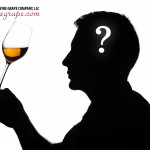
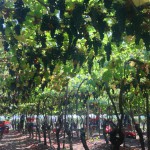
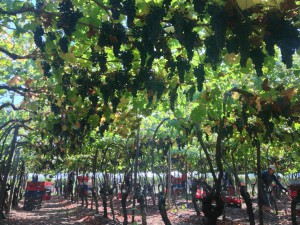
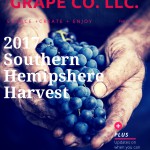
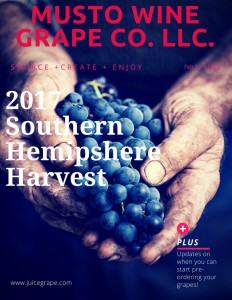
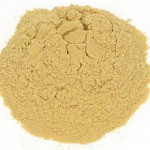
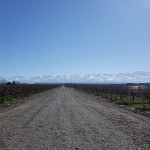
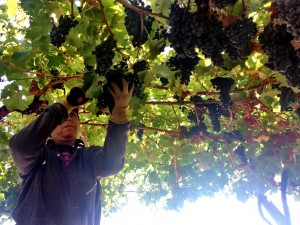
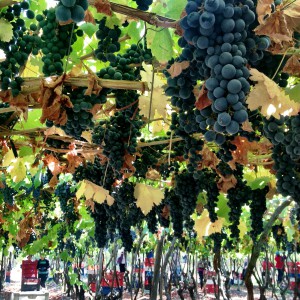
Recent Comments